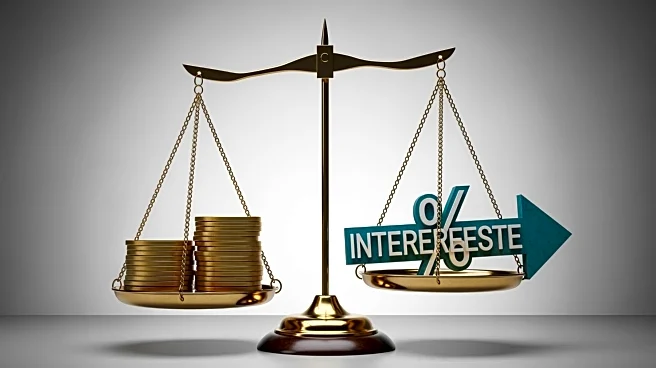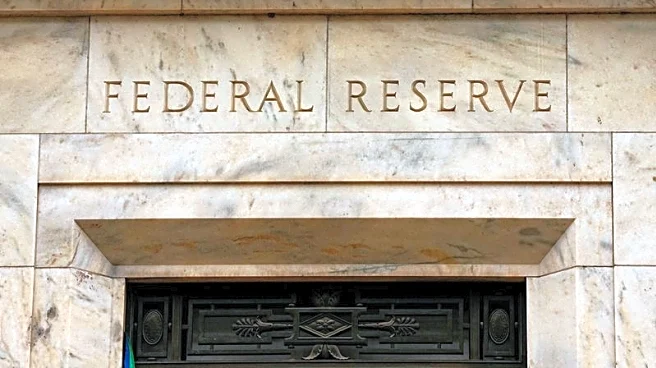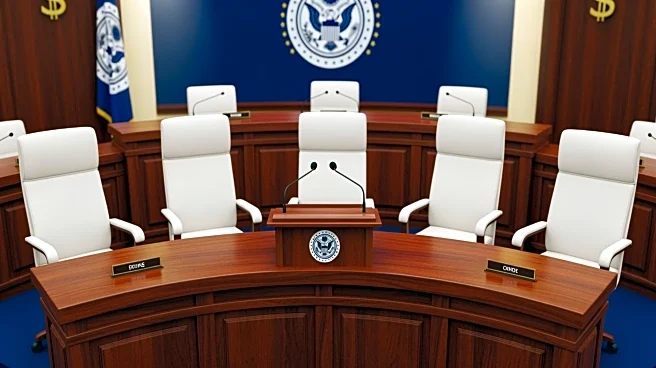What's Happening?
As the Federal Reserve prepares to cut interest rates by another quarter percentage point, bond investors are reassessing their holdings of longer-dated Treasuries. Traditionally, investors extend duration
during rate-cutting cycles to lock in higher long-term rates. However, some are now reducing positions in longer-dated debt, anticipating a soft landing for the U.S. economy. The Federal Open Market Committee is expected to lower the benchmark overnight rate to a range of 3.75%-4.00%, marking the second easing this year. Investors are also keenly observing Fed Chair Jerome Powell's remarks for insights on the conclusion of the Fed's quantitative tightening program.
Why It's Important?
The Federal Reserve's actions and communications are pivotal for financial markets, influencing interest rates and investor strategies. A rate cut typically leads to lower yields on shorter-dated securities, prompting investors to seek longer maturities for better returns. However, the current pullback from long-duration bonds suggests a cautious approach amid economic uncertainties. The end of quantitative tightening could further impact Treasury supply and demand dynamics, affecting yields and borrowing costs. These developments are crucial for fixed income markets and broader economic conditions, as they influence investment decisions and economic growth prospects.
What's Next?
Investors will closely monitor the Federal Reserve's policy meeting and subsequent announcements. The potential end of quantitative tightening could lead to adjustments in Treasury issuance and market liquidity. Additionally, Powell's comments will be scrutinized for indications of future monetary policy directions, including the pace of rate cuts and balance sheet management. These factors will shape investor strategies in the bond market and influence broader economic conditions, including inflation and growth expectations.












